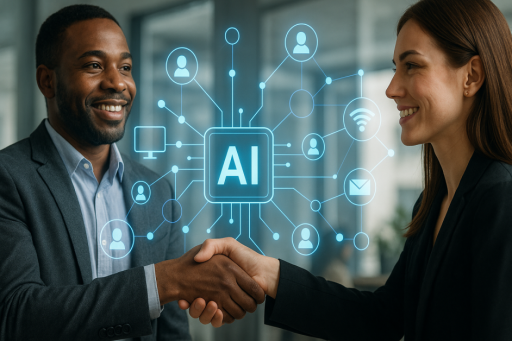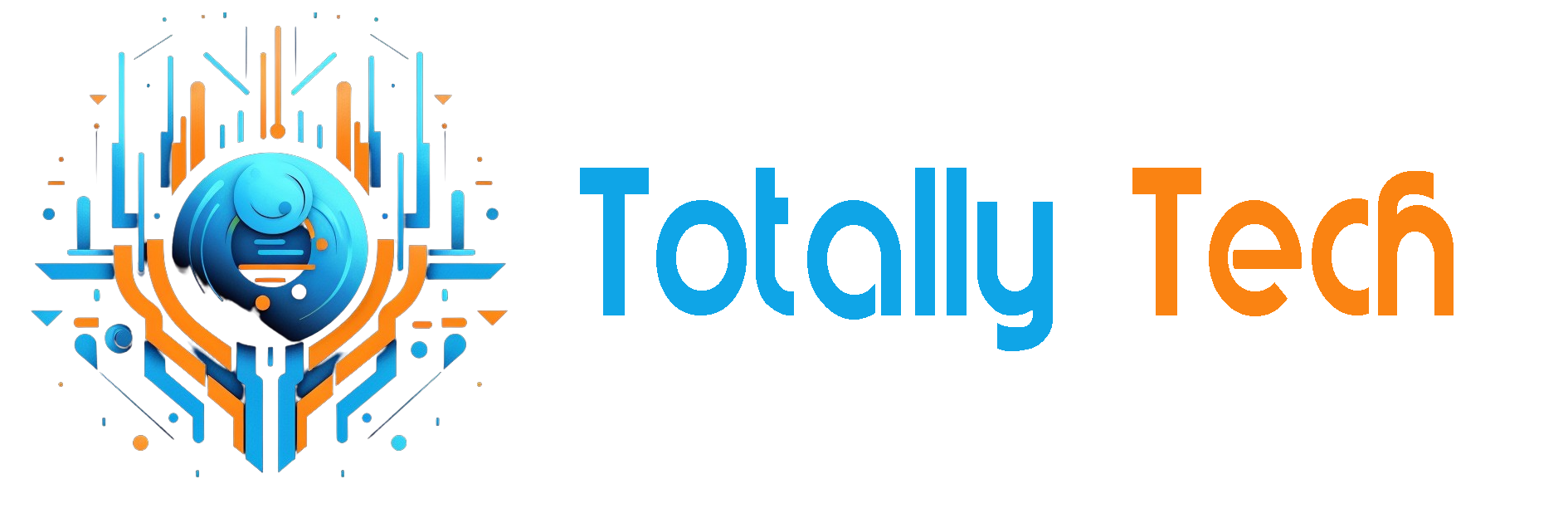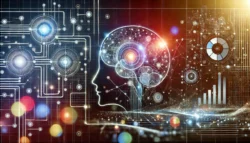
The prevailing fear around artificial intelligence (AI) is that it will render human workers obsolete, replacing jobs, eroding trust, and stripping away the human element of work. It’s an anxiety rooted in real data: according to the World Economic Forum, 40% of employers expect to reduce headcount due to AI automation, and Goldman Sachs estimates up to 300 million jobs could be disrupted globally.
But the story is more complex, and more hopeful. Historically, technology hasn’t erased work; it’s reshaped it. AI isn’t just a substitute for labor, it’s a catalyst for transformation. It’s helping workers offload repetitive tasks so they can focus on what humans do best: critical thinking, creativity, and relationship building. In fact, research shows AI is linked to a fourfold increase in productivity growth and even wage premiums in some sectors.
In network-driven industries especially, where timing, trust, and nuance drive value, AI is not replacing human connection. It’s enhancing it. It’s turning guesswork into strategy and transactional outreach into meaningful engagement.
From Tool to Teammate: The Shift in AI’s Role
The first wave of AI was task-oriented, scheduling meetings, transcribing calls, generating basic content. It saved time, but didn’t fundamentally change how business development teams worked.
That’s no longer the case. AI has evolved from a passive assistant into a proactive teammate—one that surfaces insights, suggests next steps, and helps teams engage with precision. Modern AI tools now analyze real-time signals like website visits, funding announcements, job changes, and social activity to pinpoint the right moments to reach out. They eliminate guesswork by answering the three most important outreach questions: who, when, and why.
Using predictive analytics and behavioral cues, AI goes beyond organizing contacts to rank them by likelihood to convert. It tailors messaging at scale by drawing on CRM history, industry insights, and engagement patterns. Follow-ups are automated, messaging is continuously A/B tested, and real-time prompts help teams respond more effectively during live conversations.
The result? Outreach shifts from a numbers game to a precision effort focused on timing, relevance, and resonance. AI moves beyond task execution to actively shape strategy and amplify human intent.
In Our World, the Network Is the Product
In our world—the world of corporate innovation advisory firms like Silicon Foundry—relationships aren’t just a part of the business; they are the business. Our value lies in the strength of our network and our ability to unlock access between corporate clients and the innovation ecosystem. Whether we’re scouting top startups in a vertical, identifying high-potential M&A targets, surfacing emerging trends, or connecting clients with leading experts, the results are driven by who we know and when we show up.
But this dynamic isn’t unique to us. In relationship-driven industries like consulting, law, real estate, wealth management, and venture capital, the most valuable opportunities often come through trusted referrals, not just cold outreach. The challenge is, these networks are anything but linear. They’re global, cross-functional, fast-moving, and incredibly complex. Traditional tools like CRMs and org charts can’t keep pace with that complexity.
That’s where AI comes in. By analyzing digital signals—calendar overlaps, email threads, LinkedIn connections—AI helps map influence, surface hidden opportunities, and pinpoint the right moments to engage. It doesn’t replace the human side of relationship work; it removes the blind spots that slow it down.
The Parsinator: Breaking the Limits of Human Networking
Human networks have natural ceilings. According to Dunbar’s Law, we can only maintain around 150 meaningful relationships at once, beyond that, things get fuzzy. But in relationship-driven businesses like Silicon Foundry, where access, timing, and trust are everything, that limitation can become a bottleneck.
That’s why we’ve begun experimenting with The Parsinator, which is our internal, AI-powered research tool in early development. It’s designed to explore how we might scale and sharpen relationship-driven work by analyzing real-time signals like funding announcements, job changes, thought leadership, and deal flow patterns. While still in MVP form, The Parsinator reflects our belief that AI can help us move beyond memory, manual tracking, and disconnected data.
We’re testing use cases that range from tactical to highly strategic:
- Individual profile summaries that quickly capture what a target executive has been working on across LinkedIn, Crunchbase, Twitter, YouTube, and beyond
- Profile recommendations to identify the right attendees for an AI and FinTech dinner in San Francisco—for example, surfacing VC profiles and startup leaders in those sectors
- Corporate-to-startup matching, like helping a major retailer explore enterprise-ready startups focused on 3D prototyping, digital twins, or demand forecasting
- Startup-to-corporate targeting, identifying ideal corporate buyers for startups, including the right decision-makers and revenue context
Our goal isn’t volume, it’s precision. We’re building toward a future where AI augments the intuition behind our work, helping us show up more strategically, engage with the right people, and unlock opportunities that would otherwise stay buried in the noise.
Expanding the Map: Happenstance and the Future of Network Intelligence
Another powerful tool reshaping how we navigate relationships is Happenstance, an AI-powered platform that uses semantic search to scan across LinkedIn, Gmail, Twitter, and other data sources to uncover meaningful connections. Unlike traditional search tools, Happenstance doesn’t just show you who you know, it maps how you’re connected across your entire network. For teams like ours, who regularly need to identify niche experts—say, someone deep in quantum R&D in London—or find a CFO at a growth-stage startup solving for cloud security based in San Francisco, Happenstance has been game-changing. It surfaces warm, trusted paths that would otherwise stay buried. While still in early stages, tools like this represent the beginning of a shift, one where networks are no longer limited by memory or guesswork, but powered by real-time, intelligent insight that breaks through the cognitive ceiling of Dunbar’s Law.
Human + Machine: The Future of Relationship-Driven Work
AI won’t replace the people at the center of relationship-driven businesses. It will amplify them. The future belongs to those who can combine human judgment with intelligent systems, using both instinct and signal to navigate complexity with precision.
This isn’t a story about automation. It’s a story about augmentation, where tools like The Parsinator and Happenstance help break past the natural limits of human memory and scale the impact of networks. When used well, these technologies don’t replace trust, timing, or relevance, they enhance all three.
The most successful network-based businesses won’t be the ones with the biggest Rolodex. They’ll be the ones that know how to activate their network at the right moment, with the right insight, and for the right opportunity. AI helps us do just that.
When human connection meets machine intelligence, we don’t lose the human element—we unlock its full potential.
The post How AI Is Actually Humanizing Professional Networking appeared first on Unite.AI.



